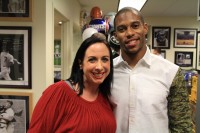For everyone who works in
the fashion business it is important to be able to recognize and to foresee
social and cultural movements, in order to understand the fashion environment
and to be able to operate in the direction in which the fashion industry will
move. Being
able to anticipate what will happen in the next future is what puts a fashion
designer, a retailer or a fashion buyer in the position to make better
decisions in their work. And in this, fashion is not at all an isolated
industry but is connected to the rest of our life. Fashion reaches beyond
clothing and into the way we choose to live our lives. Lifestyle is how we
communicate, how we travel, how we decorate our homes, how we eat and how we
dress.
Lifestyle
and trends are strongly influenced by social-cultural changes, such as
modernization, technological innovation and also by artistic
movements. Trend analysis looks at the interaction of shifts in fashion,
consumer lifestyle and culture and is a framework for understanding and
interpreting fashion changes. It is important to realize is, that trends
are made by people, who on different levels get involved with different
artistic environments.
In
order to understand a fashion trend, we need to be aware of what will surround
us in terms of our social-cultural way of living. The development of new trends usually
involves three main sources, which influence our cultural live and lifestyle. These three main sources are high culture,
pop culture and low culture.
High
culture refers to elite activities such as visual art like painting and
sculpture, other forms of art, such as music and auditory art, but also applied
art like photography, architecture and design. Art is a product of human
activity, made with the intention of stimulating the human senses, as well as
the human mind by transmitting emotions or ideas. In terms of fashion
inspiration, these emotions and ideas can later on undergo a further process
and lead to new forms of inspirations and concepts, in the case of a designer;
it can bring him to a collection idea. That means, that by observing contemporary
art, we may get information about what influences designers and upcoming
fashion trends. As an example of how art influences fashion can be found
in the Louis Vuitton collaboration with several contemporary artists, like
Stephen Sprouse or Takeshi Murakami, who in the past had embellished their
famous Louis Vuitton Monogram bags.
Popular
culture, or pop culture, is a cultural section, which is followed, understood
and appreciated by a larger audience. Pop culture is highly influenced by
celebrities and includes the daily interactions and cultural 'moments' that constitute
the everyday lives of the mainstream. This culture is seen as a commercial culture,
mass-produced for mass consumption. In terms of fashion, an example of how
pop culture can influence our lifestyle and our looks, can be found taking into
account the most stylish TV shows, like in the 80ties ‘Dynasty ‘and in the end
of the 90ties to 2004 ‘Sex and the City’. Everybody wanted to dress like the
protagonists of these serials.
In the last years mass media
has increased the exposure and power of celebrities.
The
celebrity culture has and always will have an influence on society as they are
constantly in the media. Celebrities are a kind of role models; their
looks are studied and copied by a lot of people, which makes them very
interesting to fashion companies who try to place their products on them. This year we notice a strong trend in
replacing models by Hollywood stars in fashion advertising, like Katie Holmes
for Miu Miu, Victoria Beckham for Giorgio Armani Underwear or Madonna for Louis
Vuitton. Fashion brands want to use the glam of
Hollywood actresses to project that glam on their products and at the same time
to show that luxury is doing well during this economic crisis.
The
third culture level is the low culture or subculture. Subculture includes local
street movements like graffiti, Hip Hop or other groups outside the mainstream. The influence of subculture to fashion can be
clearly seen in surf and skateboard culture from the 70ties to present day. The spirit of the skateboard and Graffiti movement
had greatly affected the whole world of sports- and street wear until today. It may be difficult to recognize certain
styles as subcultures because their look is quickly (particularly clothing and
music) adopted by mass culture for commercial purposes. Like the Japanese Harajuko girls for example,
who are teenager girls, originally from the Harajuko district in Tokyo, who
dress in a specific way.
Some
of these girls have been hired as backup dancers by American singer Gwen
Stefani, who named her 2005 world tour and her clothing line after them. A subculture has become fashionable and was
adopted by the fashion market.
To
observe the street is of equivalent importance than to keep updated with fine
arts and as well the pop culture. None
of these three cultures lives in isolation and each may influence the
development of the other and equally they influence the fashion environment
development of trends.






















